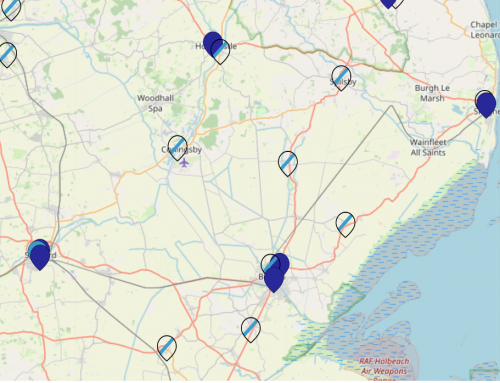In her Annual Report Shan Scott the new Chief Adjudicator seems to repeat many of the points made in previous reports. Many of these have been raised by Comprehensive Future, for example the complexity of arrangements and the need for a stronger role for local authorities.
As a picture of what is happening in school admissions the report is very valuable however Comprehensive Future continues to make the point that this is only a picture about the schools over which a complaint has been made. It cannot be assumed that just because there has been no complaint everything is being done fairly. The need for an overarching review of the whole system is still urgent.
She says Objections to admission arrangements have continued to form the largest part of our work. More objections came from parents than from any other group. Objections covered a large number of matters including the selection of feeder schools, testing arrangements in grammar schools, faith based arrangements and catchment areas. As part of objections about the provisions of arrangements, complaints were made about inadequate consultation before changes were made to arrangements. In some cases, adjudicators have found that admission authorities have not paid proper attention to the School Admissions Code’s (the Code) requirements in setting admission arrangements.
In a section about local authority reports on admissions there is the comment – In the view of a large number of local authorities, many such schools (own admission authority schools) do not appear to know about, or to understand, their responsibilities regarding aspects of admission arrangements, such as the requirement to consult on changes, the need for full and timely publication of arrangements and the probity of any appeals process. As one report states, “We have had experience of schools being almost oblivious to their new responsibilities in terms of determining and writing admission policy documents and managing the independent appeals process. While emphasis seems to be placed on many other matters related to becoming an academy school, the importance of fulfilling statutory admission responsibilities does not seem to be given the necessary importance.”
The pattern from previous years continued, with parents being the single largest group of objector, accounting for about half of all objections. The remainder came mainly from other schools, members of the public, local authorities and a very small number from a range of sources including the Local Government Ombudsman, a private nursery, appeals panels, a parochial church council, a diocese and a parish priest.
In what is a lengthy report, worth reading in detail, several points emerge –
• Need for arrangements to be clear fair and objective
As the Code says parents should be able to understand how places are allocated at each of the schools they may be interested in their children attending and that the admissions system as a whole is easy for parents to navigate. The report says -The complexity of some schools’ admission arrangements continue to be a matter of concern. Some arrangements have three or four oversubscription criteria and a suitable tie-breaker if two or more children have equal priority for the last available place; others have many more criteria.
• Vulnerable children, in year admissions and fair access protocols
The local authority annual reports are an important source of evidence about how the needs of vulnerable children are being met in the admissions process. The great majority of local authorities continue to report that in the normal admissions round the interests of looked after and previously looked after children, those with disabilities and special needs or who are vulnerable for other reasons are well served. They report some instances where individual schools seem to be less willing to admit such children but also robust approaches to tackling such occurrences. The Chief Adjudicator says A very few reports record less positive experiences; typical of these is the comment that “a small minority of academies have delayed or resisted admission of LACs. This has been less helpful particularly because the procedure to direct academies is unnecessarily lengthy and bureaucratic.
Although fair access protocols generally work well, it seems some groups of vulnerable children (including asylum seekers, those with difficult family circumstances or returning to school having previously been excluded) may be more likely than others to need a school place outside the normal admission round. It seems that the system may not be quite so successful in meeting the needs of children here with the result that children spend more time out of school than they should. The report is clear – Difficulties are encountered most frequently with schools that are their own admission authority, which account for about half of those that have not agreed the local protocol. I must state unequivocally that, despite what some schools seem to believe, all are bound by the protocol that applies in their authority, whether they have formally agreed it or not.
The report deals extensively with the issue of in year admissions. Only 18 local authorities do not co-ordinate in-year admissions for any of their schools, whereas 50 local authorities co-ordinate all in-year admissions. The report mentions that Schools that are their own admission authority are sometimes known to make background checks on children for whom in-year admission is sought before giving a decision. This is time consuming, and results in a child being out of school longer than should be necessary. Moreover, if a school has available places in the relevant year group, they should be offered to applicants freely and without condition.
As this evidence from local authorities suggests that the interests of children needing a school place in-year may not always be fully served and that some children may be out of school for too long the Chief Adjudicator says the DfE may wish to consider whether to bring forward proposals for local authorities to have a duty to co-ordinate all in-year admissions.
• The role of local authorities in policing admissions arrangements
Local authorities have a duty to object to the admission arrangements of any own admission authority school in their area if they are of the view or suspect that the arrangements are unlawful. This requirement is set out in paragraph 3.2 of the Code.
The adjudicator reports’ It is concerning, therefore, that eight local authorities were not confident that the arrangements of all schools in their area were lawful’. The majority of referrals to the adjudicator from local authorities came from only seven local authorities. She also comments – Nevertheless, I remain concerned that, when objections are made to the OSA, adjudicators continue to find matters in the admission arrangements of schools that are their own admission authority that ought to have been found and remedied during local authorities’ in-house checks.
In relation to vulnerable children including those with special needs it is clear that the LA responsibility is sometimes hard to fulfil. One LA report comments, “There is a concern … that some parents are being actively dissuaded from ‘choosing’ some schools, which are able to support those learners by making reasonable adjustments as necessary. This practice is being challenged by the LA when it comes to light but it remains a significant concern as it is hard to evidence, and we rely on anecdotes.”
The Chief Adjudicator recommends that the DfE find ways to encourage all LAs to meet their obligations in the Code.
• Feeder schools
There were more objections to the naming of feeder schools in oversubscription criteria. These have been mostly upheld where the selection of feeder schools, often at some distance from the school which has named them, has meant that the children who live locally to the school who do not attend these feeder schools face a significantly longer or more difficult journey to alternative schools. The report specifically mentions MATs saying – We have noted this year an increasing trend for secondary schools in MATs to name all primary schools in the same MAT as feeder schools. In some cases involving MATs, the use of feeders was said to be intended to support continuity in provision for children and to reflect links between schools which were members of the same MAT. On investigation, the strength of such links varied, as did the number of children from designated feeders who actually sought places at the secondary schools. The report asks for the DfE to issue guidance on this to maximise the benefits of feeder while ensuring that the selection of feeder schools does not cause unfairness to other local children.
• Multi Academy Trusts (MATs)
As the number of MATs increase so do the number of objections about their admission arrangements for example on catchment areas, sibling priority and feeder schools. The report says that there are a number of different ways that admission arrangements for academies inmates are determined. The MAT may determine the arrangements for all schools in the trust centrally, it may set parameters within which governing bodies of individual schools determine arrangements locally or it may delegate the determination of arrangements to individual governing bodies entirely. Adjudicators have found that roles of the trust and local governing bodies are not always clearly set out in the scheme of delegation or always understood by the parties concerned. The Chief Adjudicator recommends that the DfE might wish to consider publishing guidance to MATs to ensure that responsibility for determining admission arrangements is clearly set out and reflected in schemes of delegation to local governing bodies as appropriate.
• Meeting the time table
The adjudicator cannot consider objections when arrangements have not been formally determined, even if they have been published and are being used. This meant that the OSA could not consider some cases referred to it, mostly individual schools which are their own admission authority or are members of MATs. The report also says that while almost all local authorities determine arrangements for community and voluntary controlled schools by 28 February, it is not always easy to find them on the authority’s website until the composite prospectus is published, which must be by 12 September. This can make it difficult for parents to see the arrangements in time to lodge an objection before 15 May. Clear admission arrangements, including the PAN for each school, should be available in an easily accessible part of the website of the local authority concerned. Local authorities have a duty to produce an annual report to the OSA. This year the response has been slower. 108 local authorities, compared with 118 last year, met the requirement to submit their report by 30 June and a further ten reports were received the following day. All 152 reports were not received until early September,
• Failure to consult properly
As in previous years, there were some common failings in consultation, in particular in relation to failure to consult with parents. Good consultation made use of the school’s website, social media and local papers to publicise their consultation and where they wished consultees to pass on the consultation, asked them to do so. There were also differences in terms of how admission authorities treated responses to consultation. ‘In some cases judging from the notes of meetings (if any) provided to adjudicators, there appeared to have been very little consideration of response. In others, more encouragingly, comprehensive notes demonstrated careful – sometimes robust – discussion of the best way ahead, informed by assessment of responses and use of all available data.
• Failure to publish arrangements clearly
Adjudicators continued this year to consider cases where arrangements were not published or where different and inconsistent versions of arrangements were published or where arrangements were not dated. In some cases, as in the past the admission arrangements are not published in full.
• Siblings
Past reports have set out the arguments for priority for siblings along with the possible disadvantage for first born or only children if high priority for siblingsmeans that first born or only children cannot secure a place at a local school
This year the office did not uphold any of the objections about sibling priority making the point that it seems in these casesthe admission authority had struck an appropriate and fair balance in the light of the circumstances of that school.
• Catchment areas
This year, relatively few objections which referred to catchment areas were upheld as when adjudicators examined the evidence, the reason for the catchment area (or its removal) was found to be fair in the circumstances of the school .The report makes specific reference to grammar schools – Objections have been made to the catchment areas used by grammar schools on the basis of an argument that grammar schools (unlike other schools) should not have catchment areas. There is no basis in primary legislation, regulations or the Code for this argument and these objections have not been upheld. So long as the catchment area is fair, clearly defined and reasonable there is no reason why a grammar school should not have a catchment area.
• Admissions to faith schools
The report says ‘We have again seen faith-based admission arrangements which did not meet the Code’s requirements. Adjudicators found arrangements which, for example, gave priority for attending a place of worship, but did not make clear how often person had to attend or for how long this practice had to have lasted. In other cases, there were discrepancies between what was said in the arrangements and what was stated on the supplementary information form, which again meant applicants might not be able to tell whether they meet the criterion or not. Such lack of clarity
means that the arrangements fall foul of paragraph 1.37 which says, “Admission authorities must ensure that parents can easily understand how any faith-based criteria will be reasonably satisfied.” The report also said that the OSA had had a small number of objections to arrangements which involved the removal of faith-based criteria. In these cases the admission authorities’ decisions were supported by the religious authority. There is no requirement for schools with a religious character to have faith-based arrangements and the objections were not upheld.
• Co ordination of admissions
Generally this is a positive picture. The report says that a significant number of local authorities mentioned difficulties with schools that are their own admission authority not meeting deadlines when dealing themselves with the ranking of applications, some then calling upon the local authority for help in applying their oversubscription criteria. As many reports again point out, it is the local authority to which applicants instinctively turn for answers when left confused by any part of the process, irrespective of a school’s status; parents do not always see a distinction between academies and any other category of school and so assume the local authority is responsible for all decisions regarding allocations and that it has the powers to resolve any difficulties. Referring to the LA reports the Chief Adjudicator says The growing number of schools that are their own admission authority is noted in a number of reports as increasing the complexity of the admissions process, given the volume of data that needs to be exchanged between the schools, the home authority and neighbouring authorities in many parts of the country. Many schools that are their own admission authority, especially (but not only) those recently designated as such, are seen to struggle to comprehend the requirements of co-ordination; late returns and changes to ranked lists of applications cause delays and risk statutory timescales not being met. But many local authorities note a continuing improvement in the general efficiency of the application process, with several reporting better and speedier exchanges of information.
• Appeals
The Chief Adjudicator asked local authorities to report on the extent to which schools that are their own admission authority continue to use local authority services for appeals, and to comment on any aspect of the process that either works well, or causes difficulties. 138 local authorities continue to provide appeals related services in their area to at least some schools that are their own admission authority. In the primary sector, it is voluntary aided and academy schools that make up the majority of the schools taking these services, whereas in the secondary sector, academies predominate. Many authorities commented again on the challenge, especially for schools that are their own admission authority, in assembling impartial and skilled appeals panels; low. When the local authority itself is administering the process, one points out that “Panel members are sometimes asked to commit to 5-8 days hearing appeals for a school which is a lot to ask an unpaid volunteer to commit to. ‘Many local authorities commented on pressures of time, often exacerbated by recent reductions in staffing, with at least one large shire county having to deal with upwards of 2,000 appeals last year. However the Chief Adjudicator comments that – Notwithstanding the difficulties mentioned above, my overwhelming impression is that local authorities manage the appeals process diligently, with genuine concern for applicants who challenge decisions, and that they strive to achieve the best educational outcomes for the parents and children concerned.





